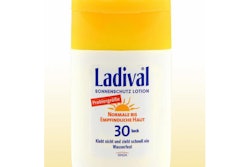![Instruments and consumables used for IVD [In Vitro Diagnostics] testing represent a $51.3 billion market in 2013, with a compound annual growth rate (CAGR) forecast of 7.2% between 2012 and 2017.](https://img.healthcarepackaging.com/files/base/pmmi/all/image/2013/12/hp_23148_bloodtest.png?auto=format%2Ccompress&q=70&w=400)
Instruments and consumables used for IVD [In Vitro Diagnostics] testing represent a $51.3 billion market in 2013, with a compound annual growth rate (CAGR) forecast of 7.2% between 2012 and 2017.
That’s according to a presentation, “Opportunities for the Global In Vitro Diagnostics Market, Strategic Alignment with Global Market Needs,” made by Winny Tan, Ph.D., Senior Industry Analyst, Life Sciences, Healthcare, Frost & Sullivan, at the early November IVD Business Strategy Conference in San Diego,
Tan cited hospital patients, independent labs, and hospital outreach as the leading customer segments for the U.S. IVD lab market.
According to the U.S. Food and Drug Administration, IVDs “are tests that can detect diseases, conditions, or infections. Some tests are used in laboratory or other health professional settings and other tests are for consumers to use at home.”
Evaluate Pharma, a source for life science sector analysis, in late 2012 launched EvaluateMedTech® as a service focusing on the medical device and diagnostic industry. EvaluateMedTech’s “In Vitro Diagnostics (IVD) Market to 2018” reports, “Overall the in vitro diagnostics market continues to grow rapidly as emerging markets invest in healthcare infrastructure, drugs become increasingly linked to diagnostic tests, and laboratories continue to invest to improve efficiency.”
The report listed its “Top 10 Companies & Total Worldwide In Vitro Diagnostics Sales 2011-18” as Roche, Danaher, Siemens, Abbott Laboratories, Thermo Fisher Scientific, Becton Dickinson, Syramex, Alere, Johnson & Johnson, and bioMerieux.
In June 2013, Frost & Sullivan released its “Analysis of the Global In Vitro Diagnostics Market," which noted the following:
“Despite global economic and industry challenges, IVD markets are growing robustly at double the rate of the global pharmaceutical industry in some segments. Growth in emerging markets and next-wave emerging markets, particularly in the Asia-Pacific (APAC) region, are the most important factors in formulating future strategies.”
Frost & Sullivan's research identified the market size at $45.68 billion in 2012 and forecasts revenue to reach $64.65 billion in 2017. “While the U.S. and Western Europe are the largest IVD markets, APAC and Eastern Europe are projected to be the fastest growing. The research covers immunochemistry, clinical microbiology, tissue diagnostics, hemostasis, hematology, molecular diagnostics, self-monitoring blood glucose (SMBG), and point of care testing (POCT) segments.
"The APAC region holds the greatest number of next wave emerging markets, such as Indonesia, Vietnam, and the Philippines," notes Tan. "This fast-rising regional market must be part of every IVD company's long-term strategy."
“APAC healthcare expenditure is forecast to increase 151 percent by 2020. The demand for better quality healthcare and healthcare infrastructure development will drive strong demand for IVD in the region.”
The report said that the U.S. and Western Europe continue as the largest IVD markets, which collectively represent nearly 60% percent of the global market, noting that anticipated outcome for these markets varies.
"Unfavorable business conditions for IVD are slowing the U.S. market, forcing market participants to pursue outside markets that are demonstrating rapid growth," says Tan. "On the other hand, despite challenges in reimbursement and a need for Conformité Européenne (CE) marking reform, Western European markets exhibit an upward trajectory.
“Such optimism will, however, be tempered by lower public health reimbursement in Western Europe and Medicare cuts in the United States. This will restrain demand across all segments of the IVD market in those regions.
"Such trends will act as a further spur for competitive IVD companies [that] have long recognized slowing growth in developed nations and have pursued emerging markets and other strategies," says Tan. "Global IVD market participants will employ a diverse set of strategies rather than rely on comprehensive product portfolios to expand their businesses."





















